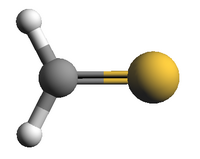|
Very accurate millimeter to terahertz transition
frequencies were added with respect to the first
entry from Feb. 2006. These were taken from
(1) H. S. P. Müller, A. Maeda, S. Thorwirth,
F. Lewen, S. Schlemmer, I. R. Medvedev, M. Winnewisser,
F. C. De Lucia, and E. Herbst,
2019, Astron. Astrophys. 621, Art. No. A143.
With respect to the Feb. 2006 entry, transition frequencies
were taken from
(2) D. R. Johnson, F. X. Powell, and W. H. Kirchhoff,
1971, J. Mol. Spectrosc. 39, 136;
by
(3) A. P. Cox, S. D. Hubbard, and H. Kato,
1982, J. Mol. Spectrosc. 93, 196;
and by
(3) R. D. Brown, P. D. Godfrey, D. McNaughton, and K. Yamanouchi,
1987, Mol. Phys. 62, 1429.
Higher order distortion parameters were estimated based
on H2CS data, as detailed in (1), and were
kept fixed in the fit. This entry is sufficiently accurate
for all astronomical purposes. Transition frequencies
with calculated uncertainties exceeding 0.2 MHz
should be viewed with caution.
The dipole moment was assumed to agree with that
of the main species, see e046509.cat.
At low temperatures, it may be necessary to discern between
ortho-H213CS and
para-H213CS.
The ortho states are described by Ka odd,
the para states by Ka even.
The nuclear spin-weights are 3 and 1 for
ortho-H213CS
and para-H213CS, respectively.
The JKaKc = 111
is the lowest ortho state.
It is 10.2388 cm–1 above ground.
|
